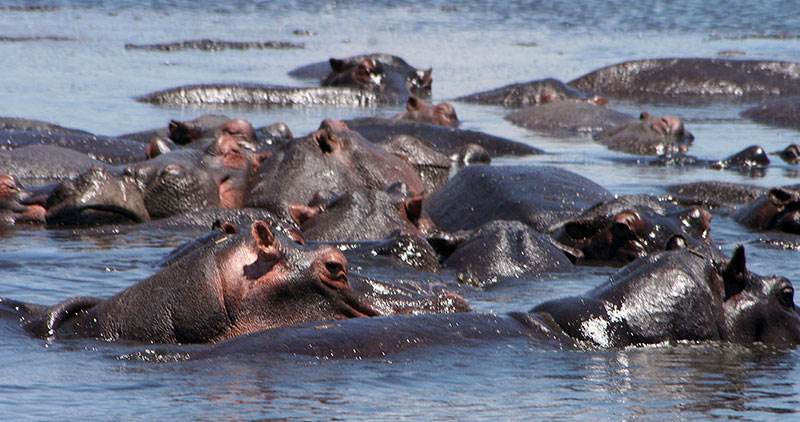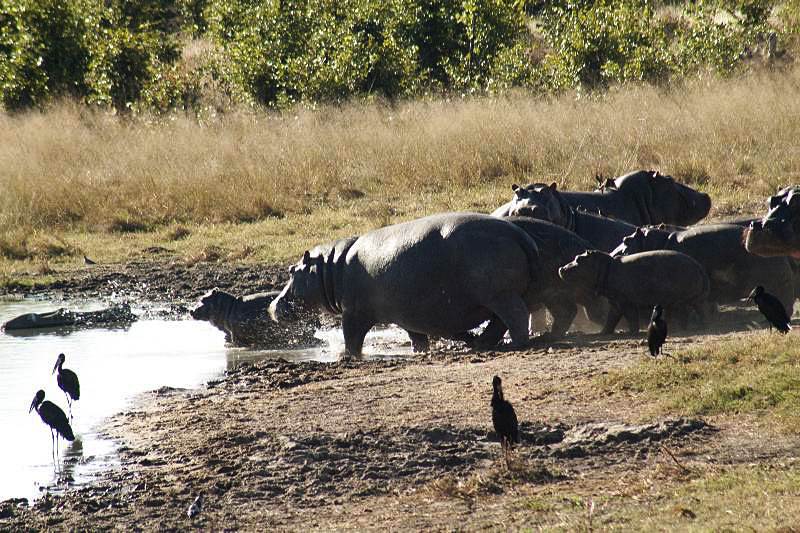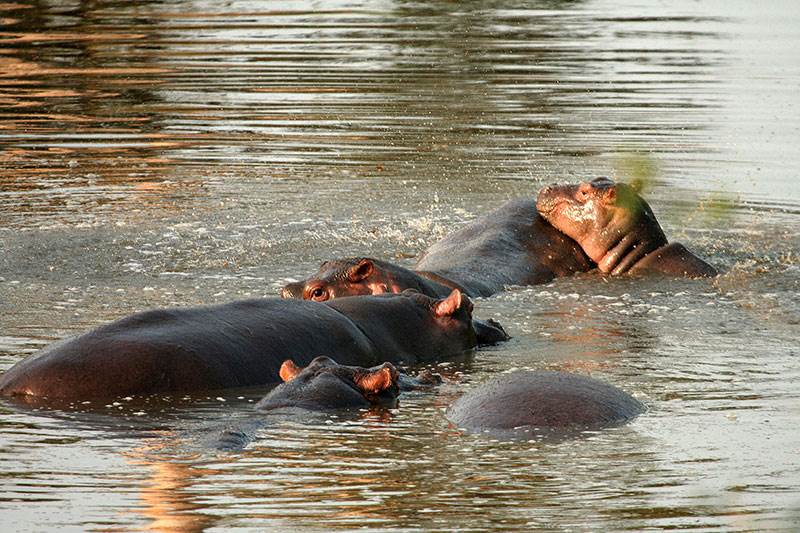Hippopotamus or Hippos facts
Hippopotamus or “hippos”, the name coming from ancient Greece for river horse. Spending most of the day in water, coming out at night to forage on land.
They are deceptively fast and can run at speeds of approx. 30 kms / hour.
The hippo is the 3rd largest living land mammal and said to be the most deadliest.
If you take time out to watch an hippo defecate you will find it is quite interesting. First the tail starts to spin and the faeces are discharged almost like a shot gun.
Those faeces are in fact rich in nutrients and play a vital role in keeping the river of Africa healthy.
Hippos Description
Hippos have a barrel shaped body, short legs and a massive head with a broad muzzle. The hide is almost hairless – the mouth has an impressive set of canines and incisors and their 4-toed feet leaves a distinctive track.
The shape of their head is much like that of a frog, and allows them to keep their eyes and nostrils above the surface, while keeping the rest of their body submerged.
The hippo does not have sweat or sebaceous glands. A unique gland that produce a viscous red fluid, has led to the myth that hippos “sweat blood.” The hippo relies on water or mud to keep it cool, and it is thought that the red fluid may have a similar function.


Distribution – Habitat
Found throughout Africa – hippos are plentiful in the Zambezi and Luangwa rivers and often groups of over 60 can be seen in one spot
Feeding Habits
Most of the day is spent in water or close to shore on sand or mud banks. Mainly feeding at night they can be seen foraging during the day.
They are vegetarian – plucking grass with their wide lips but are also known to eat the fruit and flowers of the sausage tree. They can consume up to 60kg of grass every night.
Breeding
Mating takes place in water. The gestation period varies between 230 and 260 days when a single calf is born.
Birthing takes place on land in dense bush where the calf is suckled. Maturity is reached at 4 years
General
Hippos are amazingly agile for their size – they are good climbers and often negotiate steep banks to graze on grass.
The main vocalizations are a “wheeze-honk” and a roar .
Hippos swim and dive well, and their specific gravity allows them to walk along the bottom. When submerged, they seal off their slit-like nostrils and ears.
Hippopotamuses usually remain submerged for 3-5 minutes, though they can stay under for up to 30 minutes.


The large hippopotamus is an aggressive animal; old scars and fresh, deep wounds are signs of daily fights that are accompanied by much bellowing and snorting.
One of the most aggressive and threatening postures of the hippo is the huge open-mouthed “yawn” revealing its formidable teeth. With the long, razor-sharp incisors and tusk like canines, the hippo is well-armed and dangerous.
They kill more people then any other animal in Africa, mainly at night or early morning when people walk between them and their security of water
Adult males defend narrow territories which consist of water and the adjacent land.
Both sexes are very aggressive – males defending their territory may kill another hippo nearby when courting females, and females join together to protect their offspring.
In areas where overcrowding is intense, aggression increases. They have a strict territorial system within which bulls are continually fighting for dominance. Their large tusks are used as weapons of attack or defence
